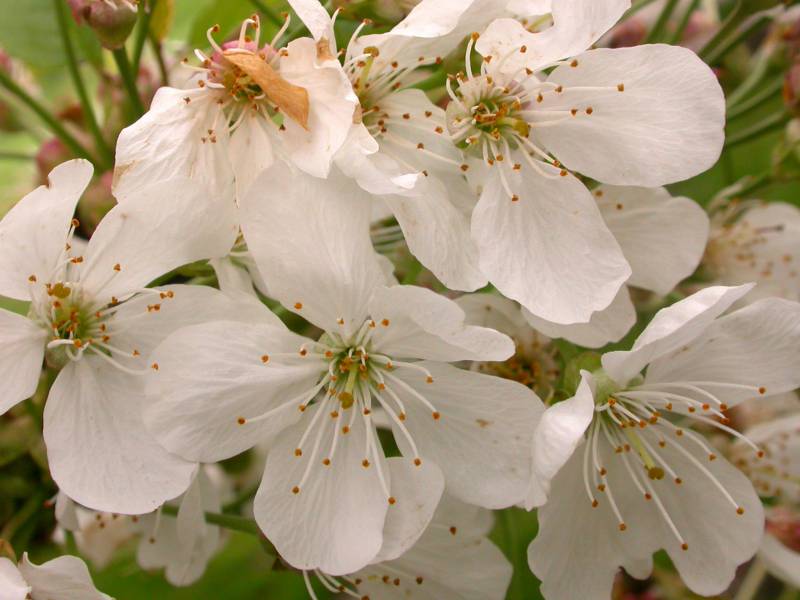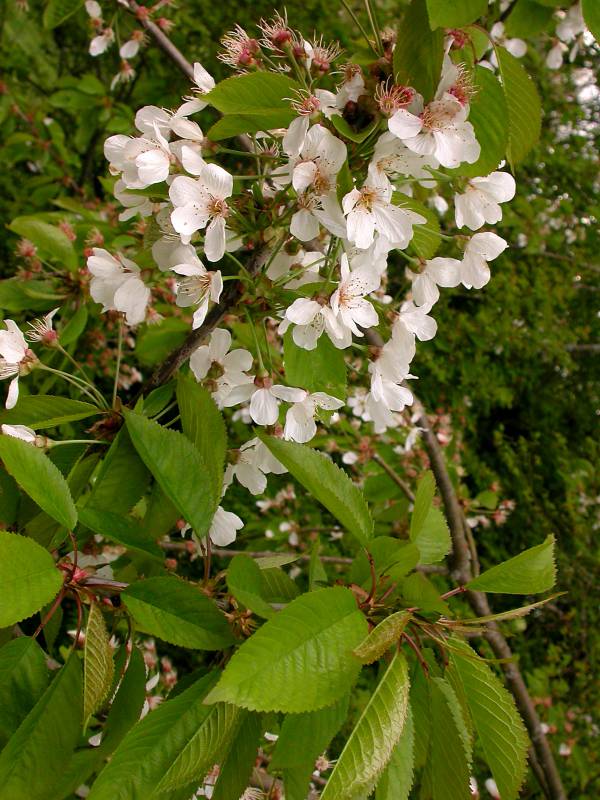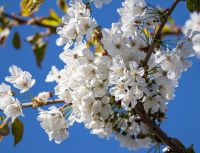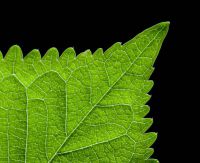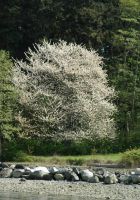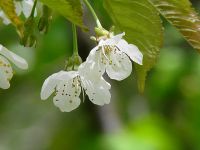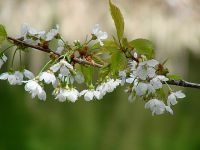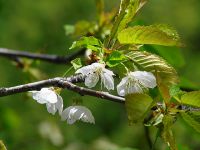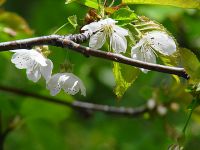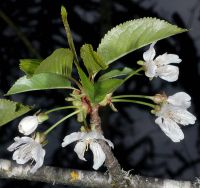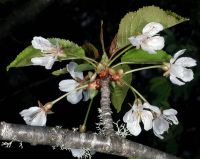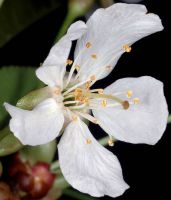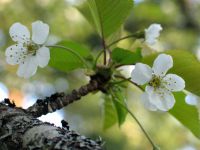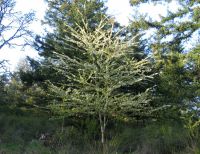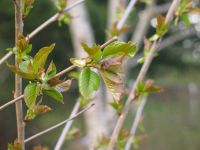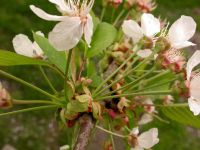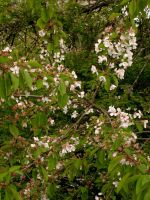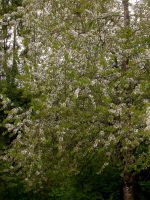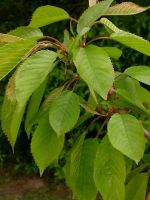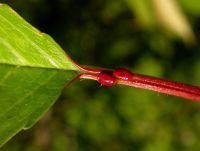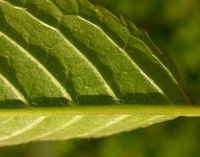Distribution: Occurring chiefly west of the Cascades crest in Washington, though distributed widely throughout the state; British Columbia to California, east to the Rocky Mountains, also in eastern North America.
Habitat: Forest edges, fields, wastelots, and other disturbed areas.
Flowers: April-May
Origin: Introduced from Eurasia
Growth Duration: Perennial
Conservation Status: Not of concern
Pollination: Bumblebees, bees, flies, beetles
Deciduous tree with peeling red-brown bark, to 25 m. tall.
Leaves alternate, oval and pointed, finely serrate, green above and somewhat downy beneath, with 2 conspicuous red glands at the top of the petiole.
Inflorescence a loose cluster of 2-6 flowers; petals 5, white, up to 15 mm. long; stamens 20-30; pistil 1.
Fruit a drupe, globose, yellow, becoming dark red, strongly acid.
Publication: Fl. Suec. (ed. 2) 165. 1755.
PNW Herbaria: Specimen records of Prunus avium in the Consortium of Pacific Northwest Herbaria database
WA Flora Checklist: Prunus avium checklist entry
OregonFlora: Prunus avium information
E-Flora BC: Prunus avium atlas page
CalPhotos: Prunus avium photos

